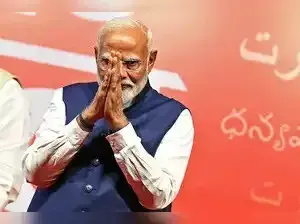Weakened Modi Government Faces Challenges in Fiscal Consolidation
Can a weakened Narendra Modi government continue its work of narrowing the fiscal gap, which it has been able to do in recent years? Economists say it is doable, but perhaps not at the pace the government would have preferred. Following exit polls, analysts were optimistic about the Indian economy’s fiscal deficit coming down to its target of 4.5 percent by FY26. This optimism was based on the prediction of a landslide victory for the BJP-led NDA. However, the actual election results were different: the NDA has enough numbers to form a government at the Centre, but the BJP on its own falls short of the majority of 272 seats needed in the 543-seat Lok Sabha. The narrower margin of victory for Indian Prime Minister Narendra Modi’s alliance in elections will forestall reforms that could have potentially facilitated aggressive fiscal consolidation, an analyst at Moody’s Ratings told Reuters in an interview. “If the BJP, like it did in 2014 and 2019, had won over 273 seats on its own, it could have pushed on with curbing the gap at a much more aggressive speed,” said Christian de Guzman, senior vice president of the sovereign risk group at Moody’s. “It looks like the prospects for even more aggressive consolidation are not as bright as they were before the election results. However, I still think that the prospects for consolidation will remain intact, and they will retain a level of fiscal discipline.” India’s Fiscal Deficit Plans India aims to narrow its fiscal deficit to 4.5 percent of GDP by the end of FY26, down from the 5.1 percent projected for the current year ending in March 2025. Some reports indicate that India is now likely to bring down its FY25 fiscal deficit target to 4.9 percent. The smaller mandate for Modi raises the risk of more populist spending to consolidate political support, Guzman said. Although the BJP’s manifesto and the Interim Budget announced by Finance Minister Nirmala Sitharaman did not hint at much populist spending, the full budget due in July will be more telling. This budget will account for the government’s plans, including the Reserve Bank of India’s record Rs 2.11 lakh crore surplus transfer. The government could use this surplus to further consolidate the fiscal position or to garner political support, Guzman added. “A shaky political outcome perhaps suggests higher odds for the latter.” Challenges to Ambitious Reforms Fitch Ratings noted that the weakened majority for Modi’s alliance could pose challenges for the more ambitious elements of the government’s reform agenda. Guzman acknowledged India’s high growth and robust economic prospects over the medium-term are already factored into their ratings, as is the progress made on macroeconomic and financial stability. However, to upgrade India’s sovereign outlook or rating, Moody’s would need to see a “much more material improvement on the fiscal side,” Guzman explained. This includes a significant reduction in government debt and an improvement in debt affordability, such as a reduction in the proportion of revenue accounted for by interest payments or debt servicing.
Weakened Modi Government Faces Challenges in Fiscal Consolidation Read More »

